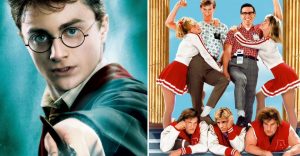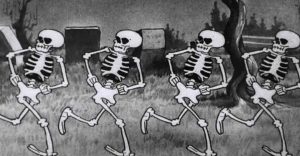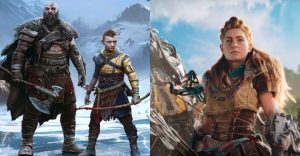Charlie And The Chocolate Factory: 5 Differences Between The Book & The 1971 Film (& 5 From The 2005 Film)

Roald Dahl is known for writing a huge list of incredible children’s books, from The Twits, to George’s Marvellous Medicine, to The BFG (as well as writing the screenplay to a James Bond film and Chitty Chitty Bang Bang). Arguably his most iconic work is Charlie And The Chocolate Factory.
It tells the story of Charlie, a winner of a Golden Ticket that allows him to tour the fabled, recently re-opened factory of the slightly crazy inventor, Willy Wonka. We’ve listed five differences between the book and each of the big-screen adaptations.
10 1971: The Fizzy Lifting Drink

In Dahl’s book, we hear a story about Fizzy Lifting Drink, an invention of Wonka that made the drinker float into the sky. One particular Oompa Loompa consumed some, was unable to burp and floated away, never to be seen again.
In the 1971 film, things take a different turn, with Grandpa Joe and Charlie drinking some just after Wonka’s warning. They end up floating towards a fan and have to burp themselves out of harm’s way, much to the disappointment of Wonka.
9 2005: Both Parents

This particular change makes a lot of sense. In Wonka’s original book, each Golden Ticket winner is allowed to bring both of their parents. This means we have five champions, plus a mum, plus a dad, plus Wonka (minus the fact that Charlie only brings Grandpa Joe).
That’s a whole lot of characters to keep up with. The film simplifies this a lot, giving us just one parental figure per winner. Much easier.
8 1971: The Oompa Loompa’s Design

Since 1973, the official description of the Oompa Loompa’s in Charlie And The Chocolate Factory is that they have golden-brown hair, rosy-white skin and are incredibly happy people from Loompaland.
This is similar to the films, though they are orange, with green hair for some unknown reason. Slightly more controversially, the book originally portrayed the Oompa Loompa’s in a way that was certainly too slavery-like for publication.
7 2005: Grandpa Joe’s Involvement

When we meet Grandpa Joe, he is bed-bound and incredibly old. He knows pretty much nothing about Wonka’s factory but wants Charlie to win the Golden Ticket either way. For some reason, the 2005 film has an overwhelming desire to make this connection much stronger.
Apparently, Joe used to work for Wonka many years earlier, before the factory was closed. As such, he was particularly excited to be able to visit his old place of work and knew a lot about its inner function.
6 1971: Charlie’s Father

In the book, Charlie’s father is very much alive and well. He is seen living alongside all of the grandparents, as well as his wife and Charlie. For an unknown, and actually rather dark, depressing and seemingly unnecessary reason, the version of Charlie’s dad in the 1971 film died before the story begins.
It’s unclear why, but maybe it is a way of explaining why Charlie brings Grandpa Joe instead of his father.
5 2005: The Existence Of Wonka’s Father

Despite Christopher Lee’s role being one of the best moments in the 2005 remake, the character didn’t exist at all in the book. Rebellion against his demented dentist of a dad is shown to be one of the main reasons Wonka opened his factory in the first place, and probably a big contributor to his very… unique personality.
It’s actually a really interesting piece of backstory that ended up being a good addition to the film.
4 1971: The Golden Egg

In the book, Veruca meets her demise after her desire for a squirrel that is able to separate nuts isn’t met. She ends up being thrown down the garbage shoot along with the rest of the bad nuts.
In the 1971 film, this sequence is replaced by golden egg-laying geese. Instead of the squirrels, she wants one of these, and her downfall comes from this alternative desire. This change was probably made due to the potential issues of either having to work with or animate squirrels.
3 2005: Veruca’s Mother

Roald Dahl became known for his love of creating unpleasant characters who were excessively fat. Augustus Gloop is one particular example of this.
However, the book doubled up on its larger characters, making Veruca’s mother a particularly ugly geography teacher named Angina. The 2005 film shows her to be very skinny and attractive, with the implication being that she is a trophy wife to her rich husband.
2 1971: Wonka’s Testing

The book version of Willy Wonka seems to be hiding an altogether darker persona than the one depicted in either film. Of course, there is an element of mystery around him connecting each version, but it is only in the book where we see some more malice at play.
The Oompa Loompas are used as testing devices for certain products, which often leads to their death at the hands of some crazy invention. This strangely guilt-free murder is, thankfully, removed from the films.
1 2005: The Ending

The biggest difference between the 2005 film and the book that inspired it is its ending. The book shows Wonka flying off in his elevator made of glass, picking up the Bucket family and zooming into space. This created the set-up for the not as well-loved sequel, Charlie And The Great Glass Elevator.
The film ends with Wonka suggesting Charlie abandons his family, which Charlie rejects. However, Wonka ends up bringing their home into his factory. It seems weird that is was the book that set itself up for a sequel rather than the film, but there you have it.

















